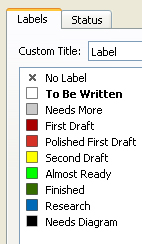No E-Cigs For You!
By Dave Hitt on Dec 24, 2013 | In Junk Science, Politics | 7 Comments
More and more smokers are switching from tobacco cigarettes to e-cigarettes. Instead of smoke from burning tobacco and paper, E-cigs provide water vapor infused with a bit of nicotine and flavoring, (Using an e-cig is referred to as “vaping†instead of smoking, and users are referred to as “vapers.â€) There is no tar, carbon monoxide, or any of the other chemicals common to cigarettes. The vapor evaporates in seconds, leaving no odor or second hand smoke. They’re available in a variety of strengths, allowing a vaper to control how much nicotine they get (and ratchet it down, over time, if they want to). They’re available in a variety of flavors. The rechargeable versions are much less expensive than cigarettes – vapers can vape for under a buck a day, as opposed to ten bucks a day for most smokers.Â
E-cig manufactures carefully avoid making any health clams, including claims about using them to quit tobacco. Most vapers, though, will tell you they quit cigarettes quickly and easily by switching to e-cigs. They’ll tell you they feel much better than they did when smoking cigarettes. Some vapers keep using e-cigs, others use them as a quitting tool. There aren’t many studies on the subject, but there’s little doubt that water vapor with some nicotine in it is far less harmful than tobacco smoke.
Nicotine nannies should be delighted about such an easy, practical way to reduce the harm to smokers. But they’re not. In fact, they are incensed by e-cigs very existence. E-Cigs are being restricted, regulated and outright outlawed. NYC and LA, who have long been in competition to see who could be the biggest nanny city, are treating them like regular cigarettes, banning them from “public†places, including outdoors. The European Union is working on severe restrictions that are designed to be impossible to meet – in other words, banning them. Why? If the nicotine nannies were really interested in public health, they’d be celebrating e-cigs instead of vilifying them. Their reaction to them makes no sense, unless you add in one other factor.
Hatred. NNs hate smoking, and more importantly, smokers, with a blind seething vehemence that makes Klansmen say, “Whoa, might want to dial that back a bit, buddy.†They view smokers as abnormal sub-humans with no self-control or concern for others. They want smoker’s choices to be limited to “quit or die.†Preferably die.
Stanton Glanz is one of the primary leaders of the current anti-smoker movement. He’s spent the last three decades promoting the “denormalization†of smoking and smokers. That’s right, he and his minions want smokers to be seen as abnormal.
NNs portray smokers as dirty, evil people who callously poison everyone around them with deadly second-hand smoke. Smartenized people know SHS is the biggest scam since homeopathy, but the NNs have been very successful getting the public to believe the myth, convincing people that the slightest whiff of smoke is deadly. It’s been their primary weapon for instilling fear and hatred of smokers for the past two decades.
E-Cigs makes SHS fears moot, because there is no SHS. Smokers who become vapers can enjoy their nicotine in a crowded, poorly ventilated room and leave behind no smell and no smoke. Now there’s no reason for the masses to hate and fear them, and the NNs are furious about that.
Hatred isn’t their only motivation; they are also driven by profit and power. Nicotine nannieism can be very lucrative. NNs get hundreds of millions of dollars from the Master Tobacco Settlement and from NGOs like the Robert Wood Johnson Foundation. And NNs love the power, the sheer power, that comes from putting blue-collar bars and restaurants out of business, and harassing smokers at every opportunity.
E-cigs are also a huge threat to the pharmaceutical industry, which makes billions from nicotine replacement therapy (NRT): outrageously expensive and enormously profitable patches and gums and candies. Unfortunately, NRT products are worthless – studies have shown they are less effective than quitting cold turkey – and people are wising up to that. E-cigs, though, are a very effective way of quitting cigarettes, and big pharma doesn’t have a piece of that action.
The NNs are responding with their favorite, time-honored tool: Junk Science. They are making claims that e-cigs are somehow more dangerous than tobacco cigarettes, and desperately funding studies designed to “prove†that e-cigs present a SHS danger. These claims are so ludicrous that the public, which blindly accepted their SHS claims, is responding with laughter.
Like every nanny campaign, they’ve included a “for the childreeeeeeennnnnn†component. The CDC issued a report that said “E-Cigarette use more than doubled among teenagers.†That sounds alarming, until you look at the actual numbers. Use (defined as someone using them in the past month) rose from 1.5% to 2.8%. That, according to their math, is “more than double.â€
What they didn’t reveal, until two months later, was that regular cigarette use among teens dropped – by about the same percentage of e-cigs increase.
NNs claim that e-cigs are marketed to kids, but they can’t provide a single example. There are no cartoon mascots or ads directed at teenagers. NNs claim the various flavors are designed to entice kids, because, evidently, adults don’t like strawberry or chocolate or coffee. (I’ve found the various attempts at capturing tobacco flavors in e-cigs are rather nasty, and prefer flavored e-cigs. When I want the taste of tobacco, I’ll smoke a pipe or a cigar.)
There are no health reasons to ban e-cigs. None. The vehement fight against them proves, finally and forever, that nicotine nannies are not motivated by health, not even a little. They are driven is power, money, and most importantly, feeding their hate.
Edited to add:  This quote from one of the nannies banning them in NYC proves the point of this article:  “Gennaro, who co-sponsored the vaping ban, worries that ‘just seeing people smoking things that look identical to cigarettes in subway cars, colleges and public libraries will tend to re-normalize the act of smoking and send the wrong message to kids.'”
He plays the “for the childreeeeennnnnn” card and admits that what really horrifies him is the prospect of smokers being considered normal again.


